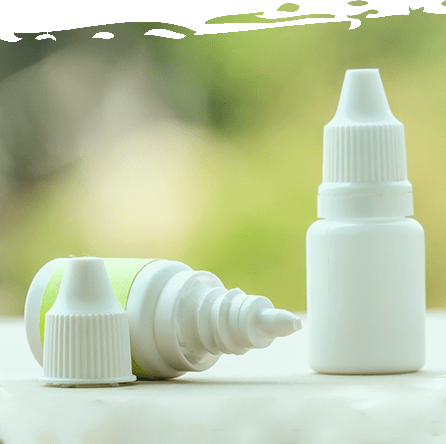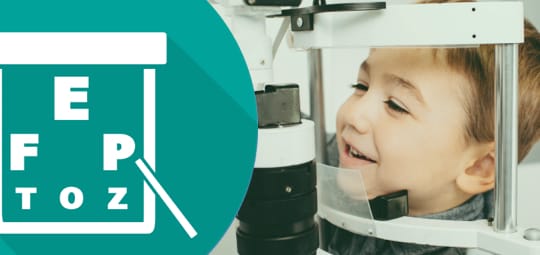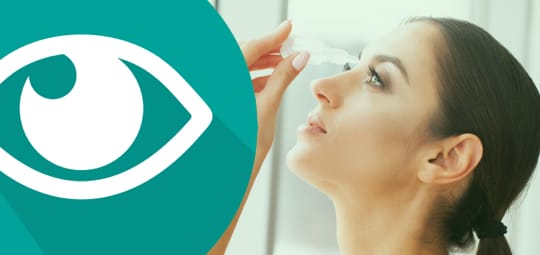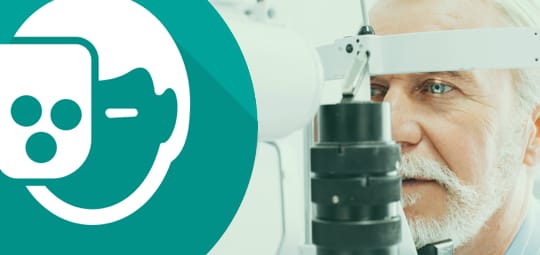Dry Eyes Can Be a Burden
More than 16 million people suffer from dry eye disease, a common and irritating condition. Dry eyes can seem like a normal part of everyday life, but many people are at an increased risk of eye infections, damage to their eye’s surface, and decreased quality of life.
Dry eyes may only happen once in a while, or they can be chronic. Anyone suffering from chronic dry eyes is likely looking for relief, and we have several treatment options. Our team has the expertise to help ease your discomfort.
Take Our Dry Eye Quiz
Dry Eye Disease Symptoms
There are several common signs of dry eye disease, including:
- Red eyes
- Watery eyes
- A stinging, burning, or scratching sensation
- Light sensitivity
- Blurry vision

Inadequate Tear Production
Tear production often declines with age. Many adults over 65 experience some symptoms of dry eye disease because their eyes simply do not produce enough tears.
Age is not the only factor contributing to inadequate tear production, however; several other aspects may increase the risk of dry eyes, including:
- Certain medications
- Medical conditions
- Desensitized corneal nerves
Increased Tear Evaporation
Increased tear evaporation, usually caused by poor tear quality, is another common cause of dry eyes. The oily layer of the tear film prevents evaporation when tears spread over the eye’s surface.
The glands secreting this oil can become plugged or clogged, causing faster tear evaporation. When the oil-releasing glands become compromised, also known as meibomian gland dysfunction, you may experience discomfort and inflammation.
Other common causes of excessive tear evaporation include:
- Eyelid problems (ectropion & entropion)
- Eye allergies
- Infrequent blinking
- Posterior blepharitis
- Wind, smoke, or dry air
- Vitamin A deficiency
Dry Eye Treatments
While there is no permanent cure for dry eyes, our practice offers several treatments to ease your discomfort and lubricate your eyes. After conducting a comprehensive eye exam, we can create a customized treatment plan. We cater your treatments to address your specific eye care needs.
Intense Pulsed Light (IPL) Treatment
Intense pulsed light (IPL) therapy is a treatment option for many patients with ocular rosacea, dry eye disease, and meibomian gland dysfunction. Our office proudly offers OptiLight by Lumenis technology for dry eye treatment.
Read more about how our doctors, Dr. Lisa Hornick and Dr. Kristyna Lenskey Sipes, have incorporated this treatment into their practice in their article Enhance Your Dry Eye Practice With IPL.
Other Treatments
Some of our other dry eye treatment options at Stanford Ranch Optometry include:
Nutrition & Supplements
Apart from the treatment options above, our doctors encourage patients to incorporate healthy eating habits. Our doctors, Dr. Lisa Hornick and Dr. Kristyna Lensky Sipes, collaborated on the article, A Dietary Approach to Dry Eye Disease Management, which provides invaluable information on supplementation and nutrition that boost eye health.
Alleviate Your Discomfort
Dry eyes can affect more than your quality of life, but we can help improve your symptoms with effective treatments. Please book an appointment with us and enjoy comfortable vision.

OUR LOCATION
Come See Us Today
Experience full-spectrum eye care at Stanford Ranch Optometry.
Parking
There is ample parking in the front and to the side of the office.
Our Address
- 2320 Sunset Blvd., Suite #110
- Rocklin, CA 95765
Contact Information
- Phone: 916-624-9396
- Email: StanfordRanchOptometrykl@gmail.com
Hours Of Operation
- Monday: 9:00 AM – 6:00 PM
- Tuesday: 9:00 AM – 6:00 PM
- Wednesday: 9:00 AM – 6:00 PM
- Thursday: 9:00 AM – 6:00 PM
- Friday: 9:00 AM – 5:00 PM
- Saturday: Closed
- Sunday: Closed
Our Services
Our Brands













